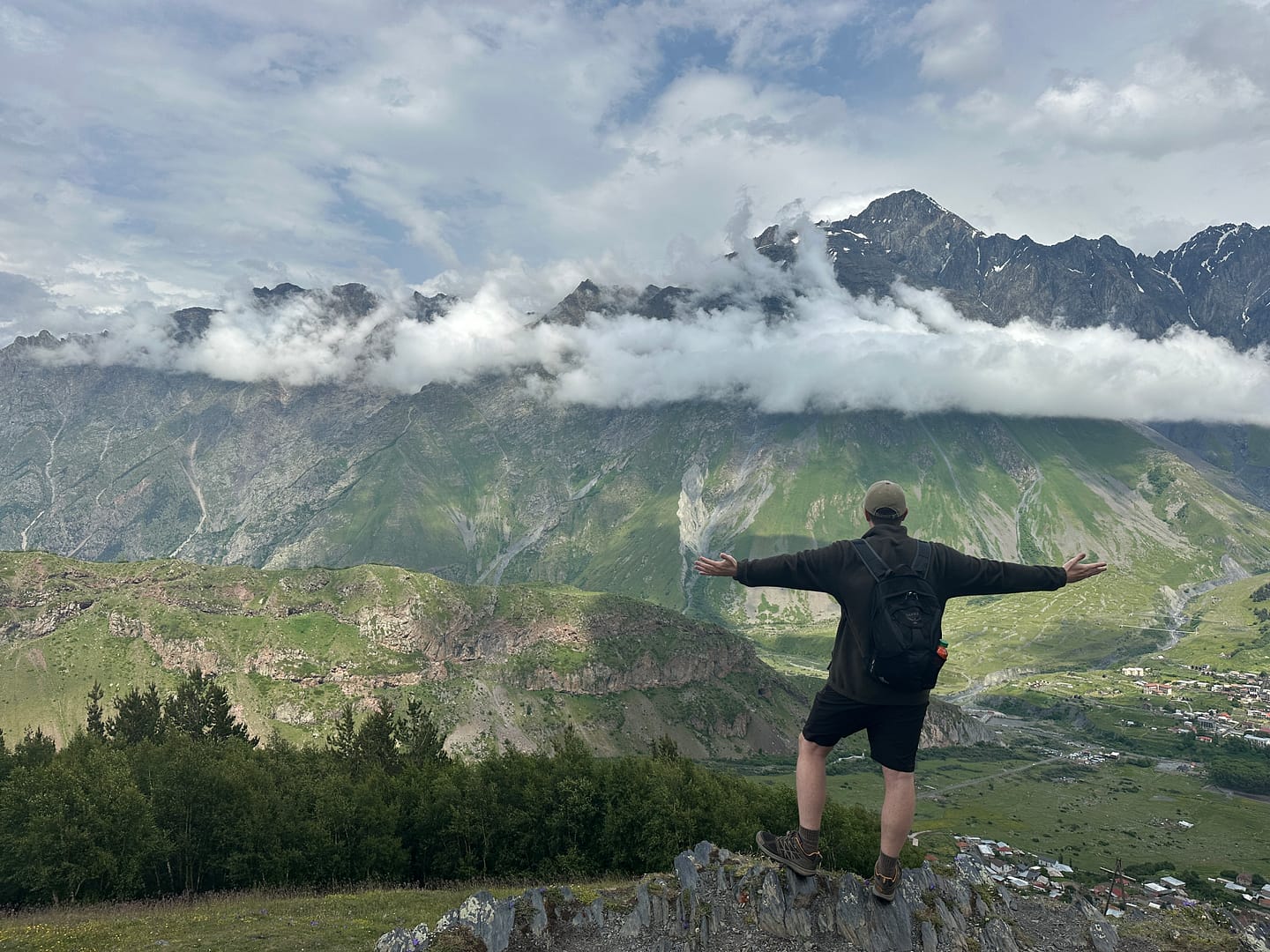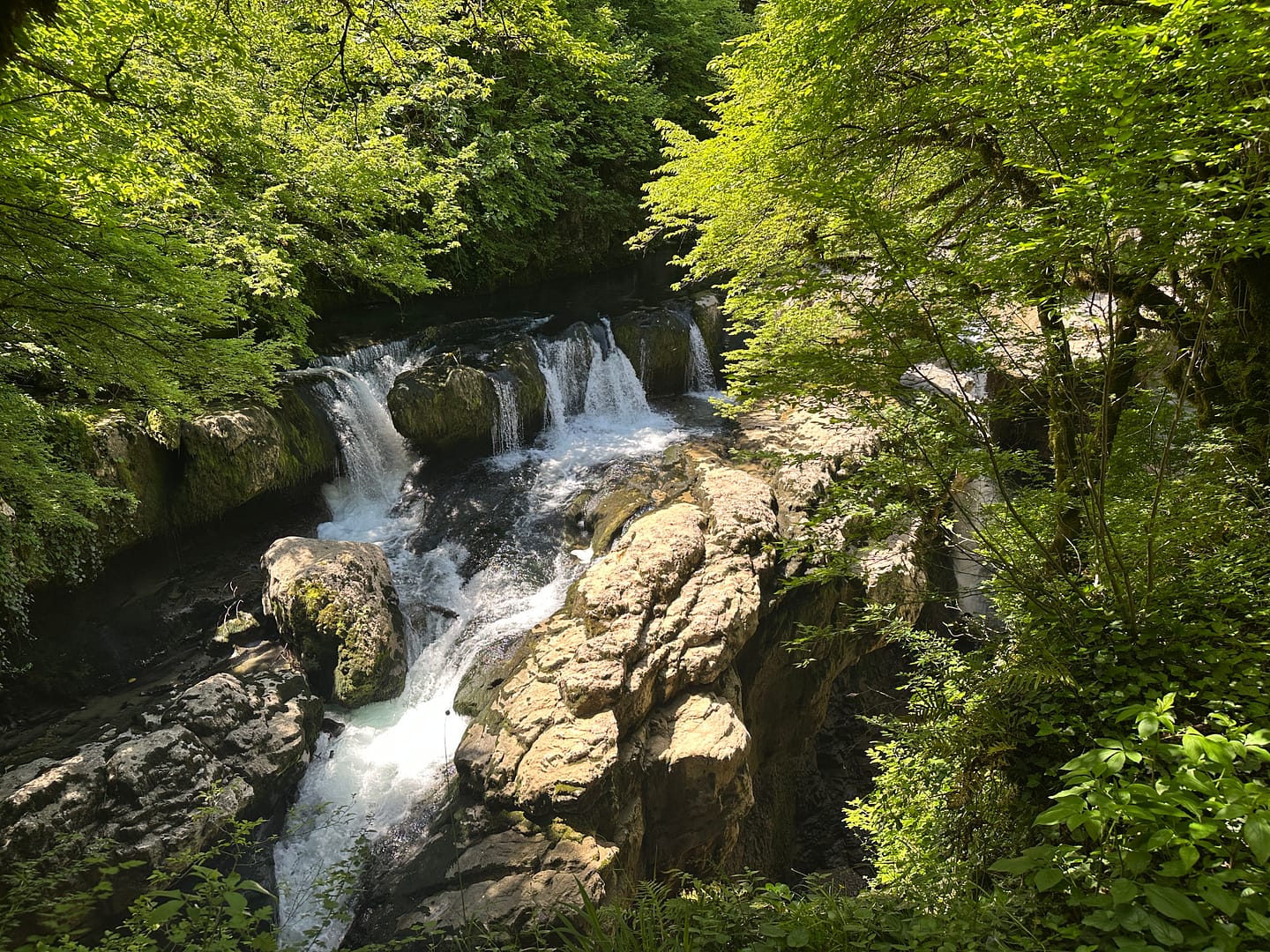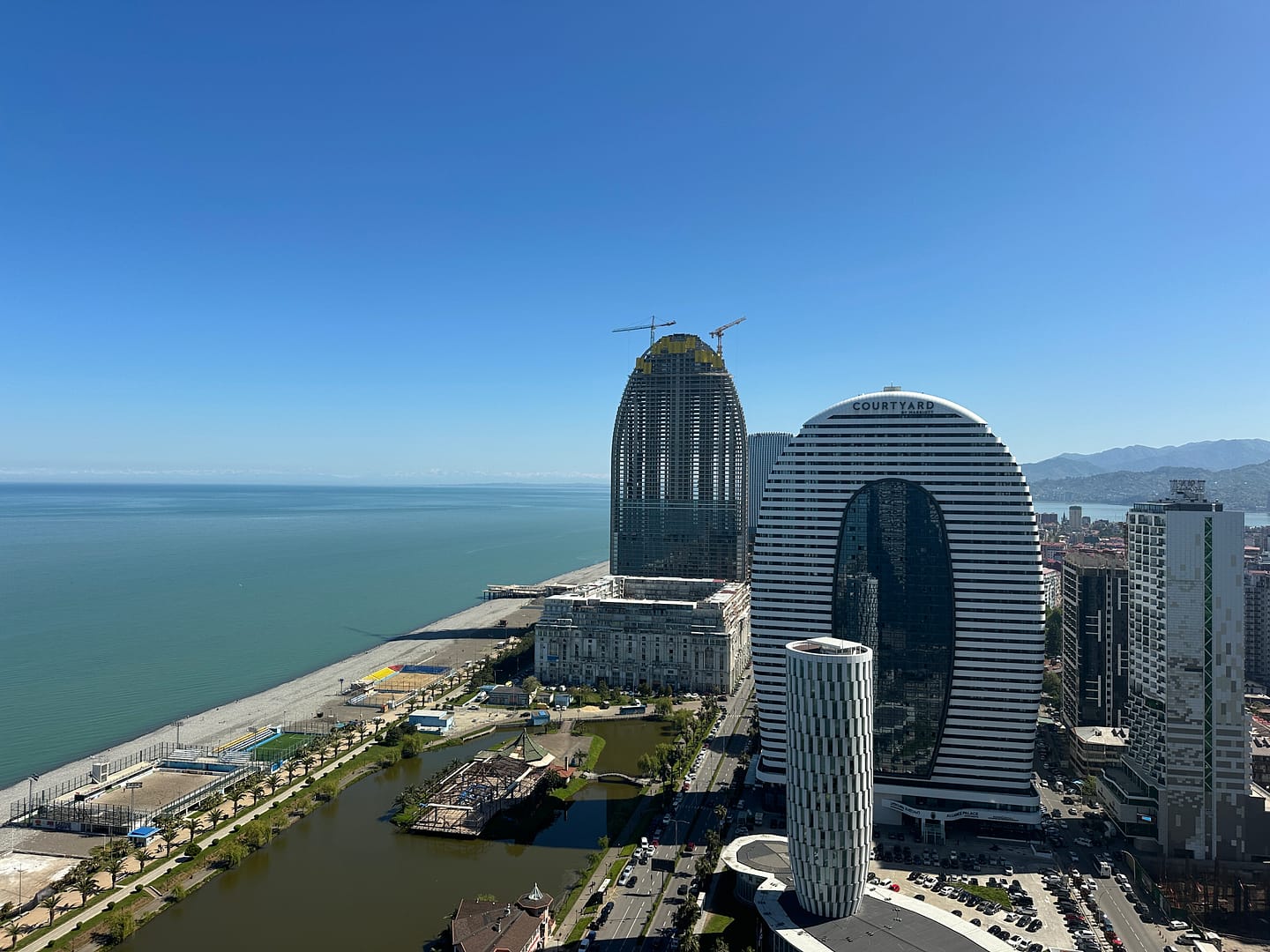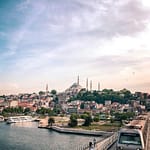Georgia is one of those countries that completely took us by surprise. From snow-capped mountains and ancient monasteries to vibrant city life and some of the best food, this small country packs in so much variety.
We spent a few weeks travelling across the country and honestly never ran out of incredible experiences. If you’re planning a trip and wondering about the best things to do in Georgia, this travel guide covers our top 10 recommendations — from breathtaking mountain landscapes to cultural highlights and foodie must-tries. We’ve included travel tips along the way and links to help you plan your Georgia itinerary.
Two Brits On The Go is supported by readers like you. This post contains affiliate links – if you make a purchase through them, we may earn a small commission but at no additional cost to you.
Things to Know Before Planning a Trip to Georgia
The beautiful country of Georgia is a year-round destination, but your experience will vary depending on when you go:
- Spring (April–June): A lovely time to visit, with mild weather, blossoming valleys, and fewer tourists. Perfect for sightseeing and wine tours.
- Summer (July–August): The mountains are at their best for hiking, though the weather can still be variable. Cities like Tbilisi and Batumi can get hot, so be prepared.
- Autumn (September–October): Another ideal time to visit Georgia – warm days, cooler nights, and the grape harvest in the Kakheti wine region. The countryside is especially beautiful with autumn colours.
- Winter (November–March): Cold in the mountains, with snow in places like Gudauri, making it great for skiing. Tbilisi is quieter but still atmospheric.
Tip: If it’s your first visit, late spring and early autumn are ideal for combining city life, cultural sites, and outdoor adventures without the extreme heat or cold.
Yes, Georgia is generally very safe for travellers (even at night). We found people to be friendly – but like anywhere, take precautions in busy areas and keep an eye on your belongings, especially in the cities.
We would recommend at least 7–10 days to see the highlights of Georgia, including Tbilisi, Kazbegi, Kakheti wine region, and Kutaisi. If you want to explore further (like Batumi or to have more time for mountain hikes), 2–3 weeks is ideal.
Our Top 10 Things to Do in Georgia
1. Explore the Caucasus Mountains – Kazbegi (Stepantsminda)
High in the Caucasus Mountains, Kazbegi is one of the most iconic locations in Georgia. The highlight is the hike up to Gergeti Trinity Church, perched dramatically against Mount Kazbek.
When we visited in late spring, the weather was a bit unpredictable — we got absolutely soaked walking up. By the time we reached the top, the sun had burst through and we’d dried off. This made the view even more rewarding.
Tip: Weather changes fast in the mountains, so pack a light waterproof. If hiking isn’t your thing, you can also take a jeep up!
👉 Read our full Kazbegi guide here with everything you need to know, including how to get there and where to stay.
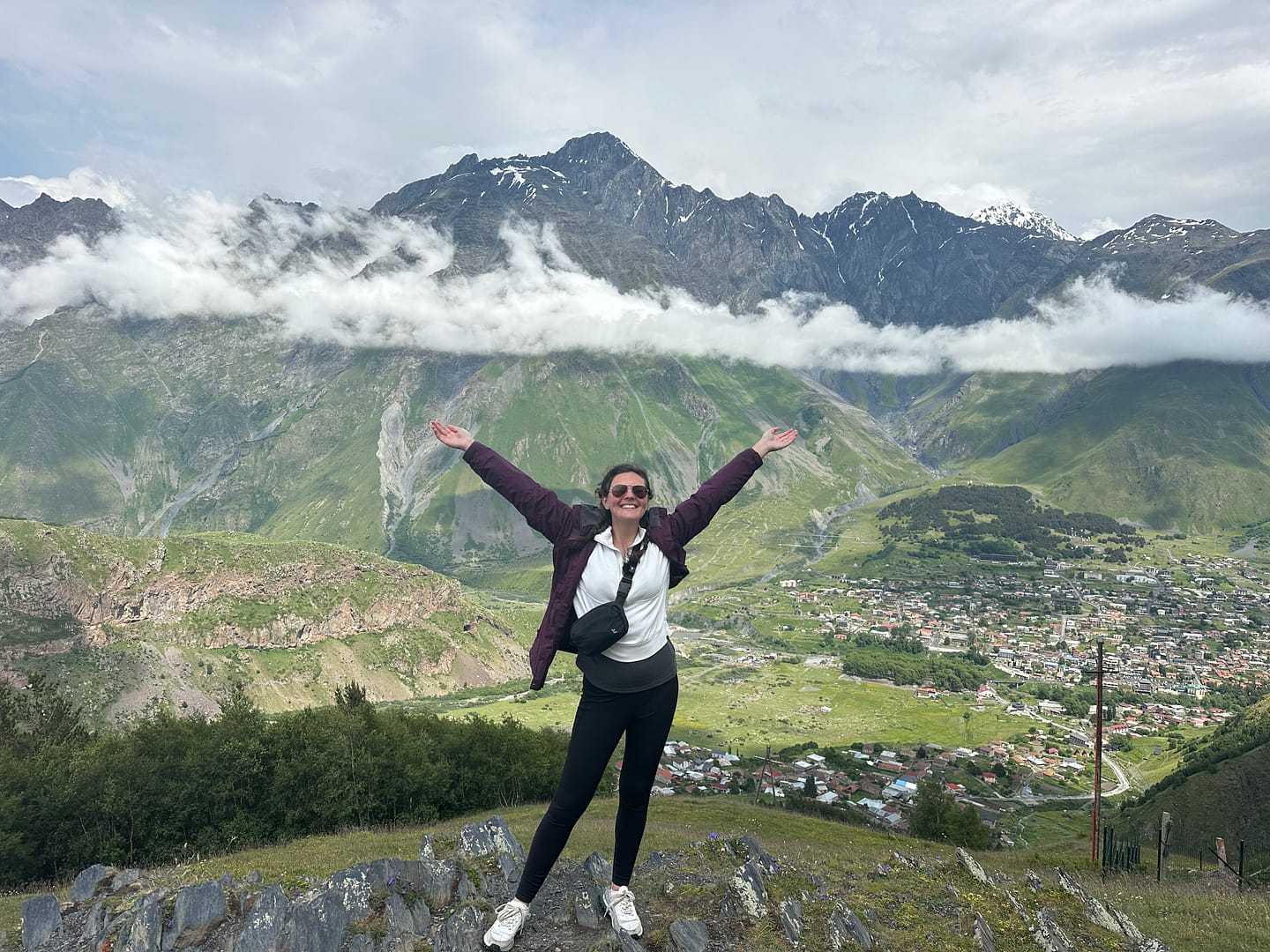
2. Wine Tasting in Sighnaghi – Kakheti Wine Region
Georgia proudly claims to be the birthplace of wine, with a winemaking history that stretches back over 8,000 years. The Kakheti region is the heart of it all, where rolling vineyards stretch across the countryside and family-run wineries that welcome visitors.
What makes Georgian wine unique is the traditional method of fermenting grapes in large clay pots called qvevri, buried underground. This technique produces wine with a completely different flavour profile — earthy, rich, and unlike anything you’ll have tried elsewhere. Sampling it in the very place it’s made, is an experience you won’t want to miss.
We chose to take a day trip to Sighnaghi, often called the “city of love”, and it was perfect for a quick introduction to the region. The town itself is small but stunning, with cobbled streets, pastel-painted balconies, and terracotta rooftops. From the old city walls you get sweeping views over the Alazani Valley, and on a clear day you can even see the snow-capped Caucasus mountains in the distance.
If you have more time, staying a night or two allows you to slow down and enjoy the relaxed pace of life here. Sip wine in the evening, wander through vineyards, and enjoy hearty home-cooked Georgian meals. Another option is to base yourself in Telavi, a slightly larger town that also makes a great hub for exploring local wineries and monasteries.
👉 You can book a wine-tasting day trip from Tbilisi here.
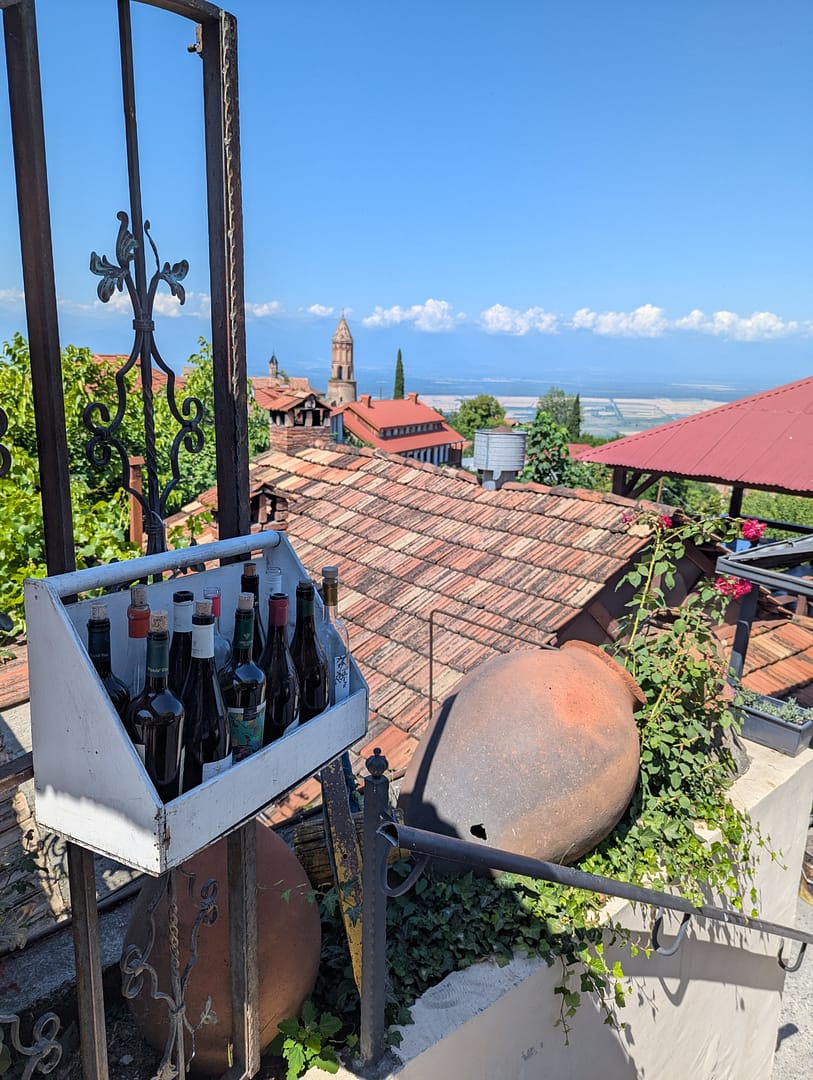
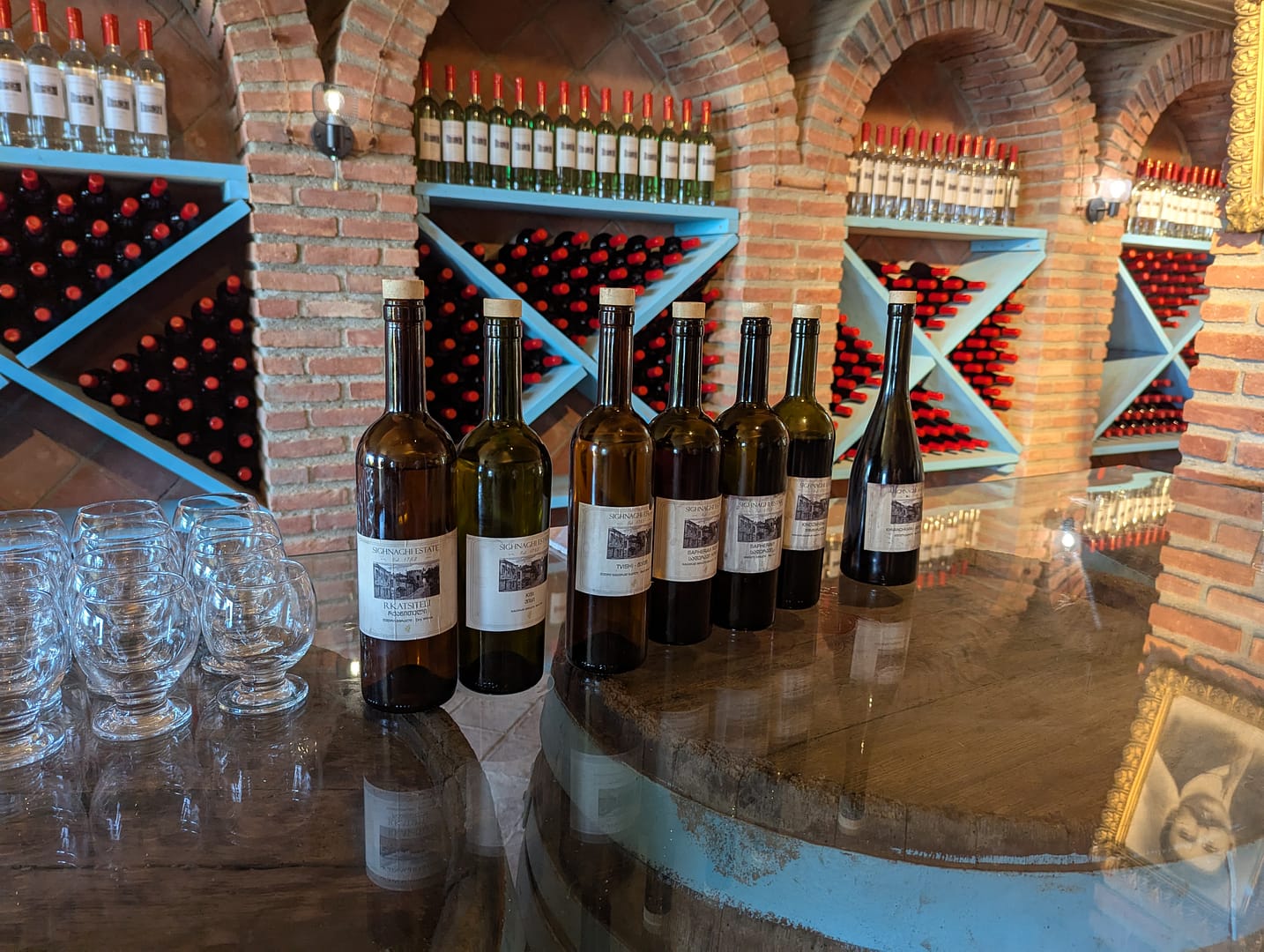
3. Discover a Stunning Natural Wonder – Martvili Canyon
Martvili Canyon is one of those places that genuinely takes your breath away. The turquoise river carves its way through steep, mossy cliffs and is a spot that really makes you stop and say, “wow.”
The best way to experience the canyon is on the boat ride (a small add-on cost), which takes you through the narrowest and most dramatic section. Here you can glide along beneath the cliffs and fully appreciate how beautiful this canyon is.
Back on land, there are walking trails with several viewpoints where you can admire the canyon from. Each of these offers a different perspective. For the more adventurous, there’s also a zip-line near the entrance that takes you across the canyon. However, it looked quite short so we gave it a miss. Even without the extra thrills, Martvili Canyon was a highlight of our time in western Georgia.
👉 If you’re staying in Kutaisi, this is an easy day trip. (We’ve written a full Kutaisi guide with caves and canyons for more information).

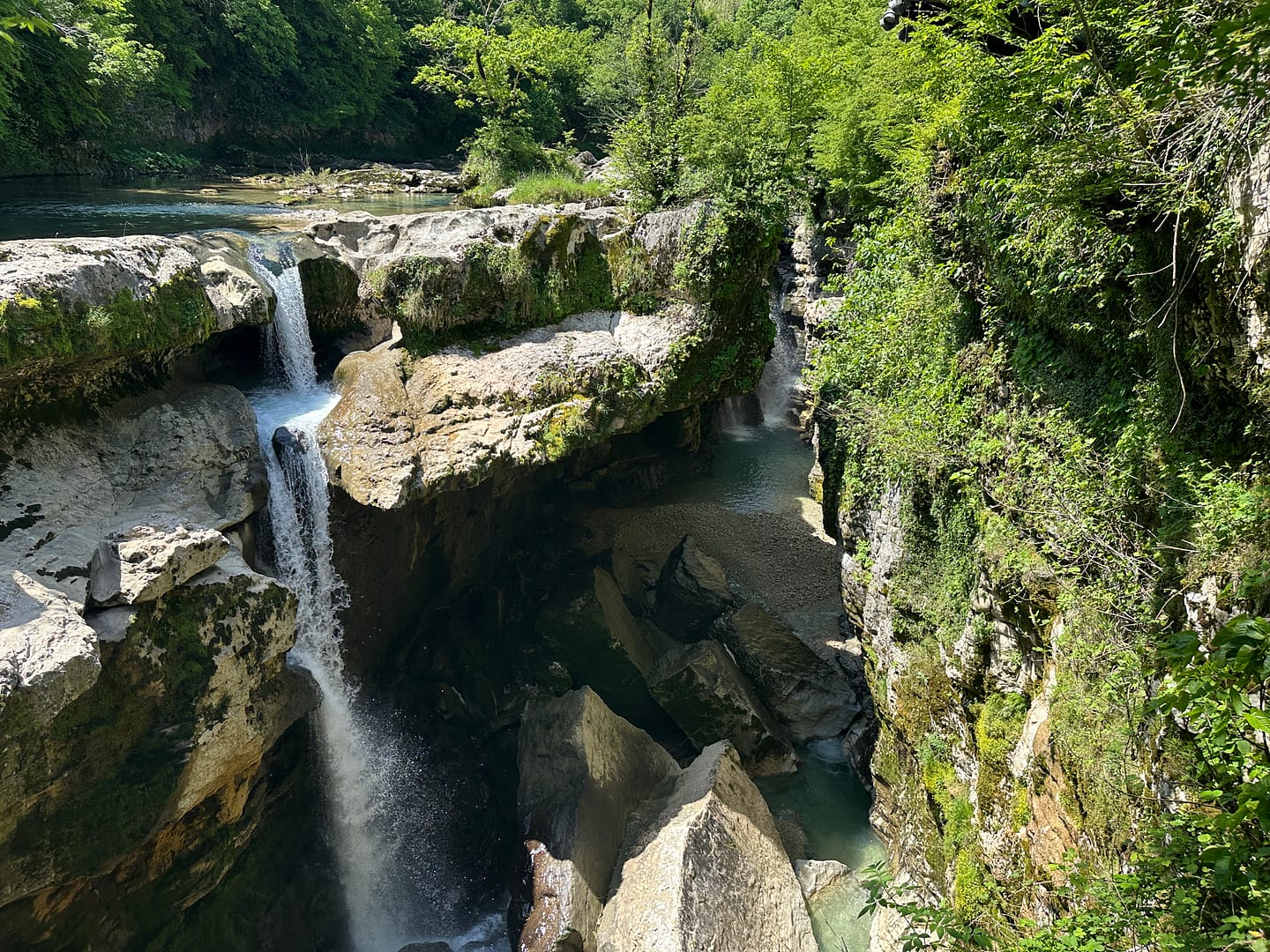
4. Adventure Day Trip to Okatse Canyon
Okatse Canyon offers a completely different experience to Martvili, but it’s just as impressive. Instead of drifting along the water, you’ll be walking high above it on a suspended metal walkway that clings to the cliff edge. It winds its way out over the gorge, giving you jaw-dropping views down into the canyon below.
It’s not for the faint-hearted – the walkway can feel a little wobbly, and the drop beneath you is dramatic! But if you can brave it, the panoramic view is amazing. The route eventually leads you to a large viewing platform that juts out into the gorge. This is a great place to take in the scale of the landscape.
Okatse is often combined with Prometheus Cave, one of the largest cave systems in Georgia. Inside, you’ll find vast chambers filled with stalactites and stalagmites, illuminated by colourful lights. Visiting both the canyon and the cave makes for an adventurous and varied day trip from Kutaisi – which we highly recommend.
Tip: You can combine Martvili Canyon, Okatse Canyon, and Prometheus Cave into a single day trip from Kutaisi — perfect if you’re short on time.
👉 Book a canyon and cave tour from Kutaisi.
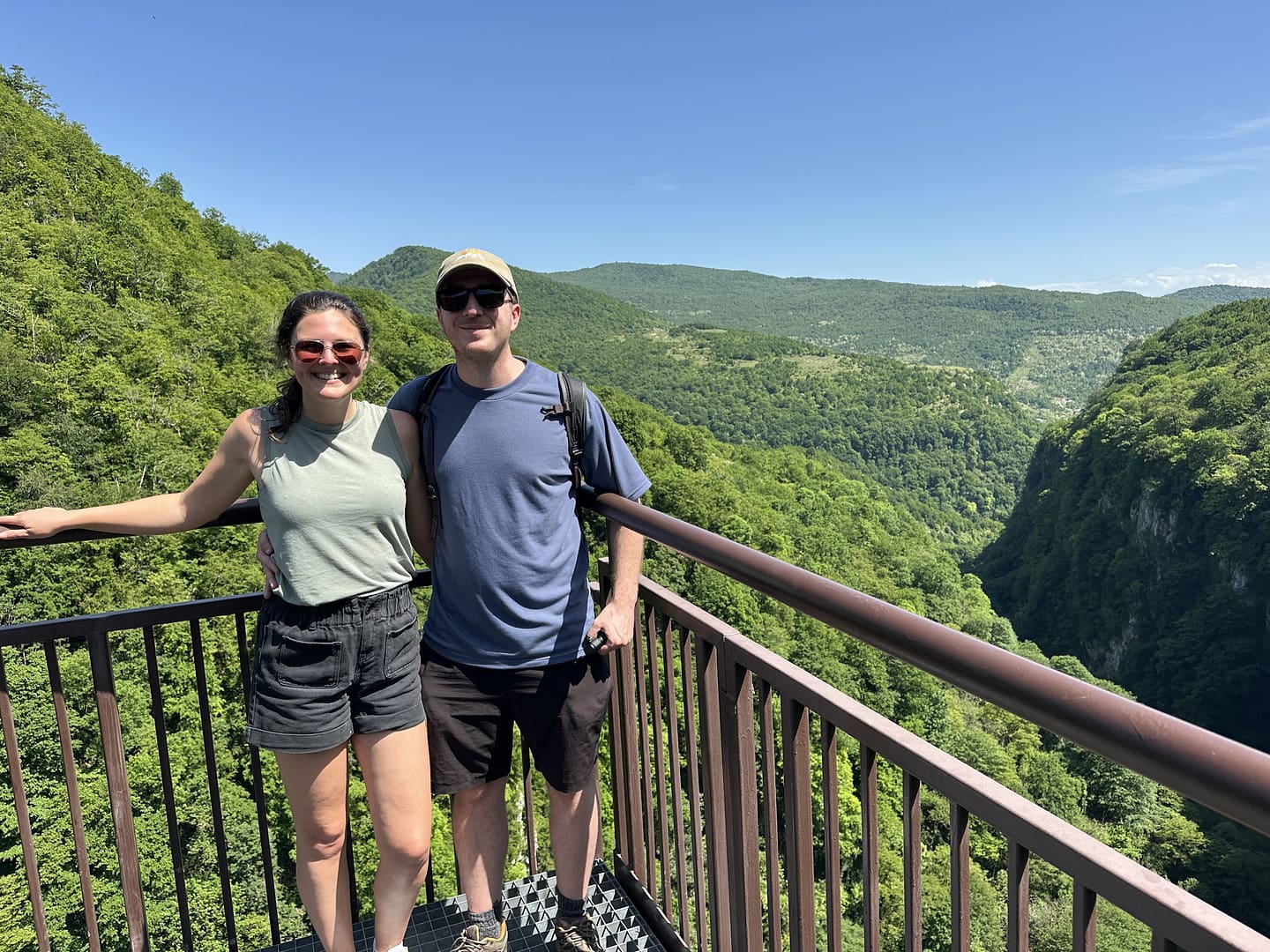
5. Sightseeing in Tbilisi – Georgia’s Capital City
Tbilisi is the beating heart of Georgia — a vibrant capital where old-world charm blends effortlessly with modern style. The city is full of historic churches, quirky cafes, and leafy boulevards, and we were struck by how much of a European feel it had. In fact, some streets reminded us of Italy, with their tucked-away courtyards and colourful wooden balconies spilling over cobbled alleys.
You can really soak up this side of Tbilisi by staying in an Airbnb with a traditional ‘Italian’ courtyard, which gives you a glimpse into local life. Alternatively, head to one of the city’s outdoor restaurants or wine bars hidden away off the main streets. This is the perfect way to enjoy warm evenings in spring and summer.
There are so many things to do in Tbilisi, and each neighbourhood feels a little different. Don’t miss the sulphur baths in Abanotubani, an experience that’s been part of the city’s culture for centuries. The Old Town itself is full of winding lanes, churches, and cosy cafes, while Freedom Square and Rustaveli Avenue bring a more modern, European city vibe.
For views, Tbilisi has no shortage of options: you can hop on one of the cable cars (yes, there’s more than one!) for a bird’s-eye look over the city. Or take the funicular railway up to Mtatsminda Park, where you’ll get sweeping panoramas of Tbilisi with the Caucasus mountains in the distance. The Narikala Fortress is another popular attraction – climb up (or take the cable car) to see one of the city’s oldest landmarks alongside the famous Mother of Georgia statue. However, make sure to check in advance if the Narikala Fortress is open because it was closed for restoration when we were there.
Tip: Stay near the old town for easy access to the main sights, but don’t be afraid to branch out into neighbourhoods like Vera or Vake for a more local vibe.
👉 Find the best hotels in Tbilisi here.
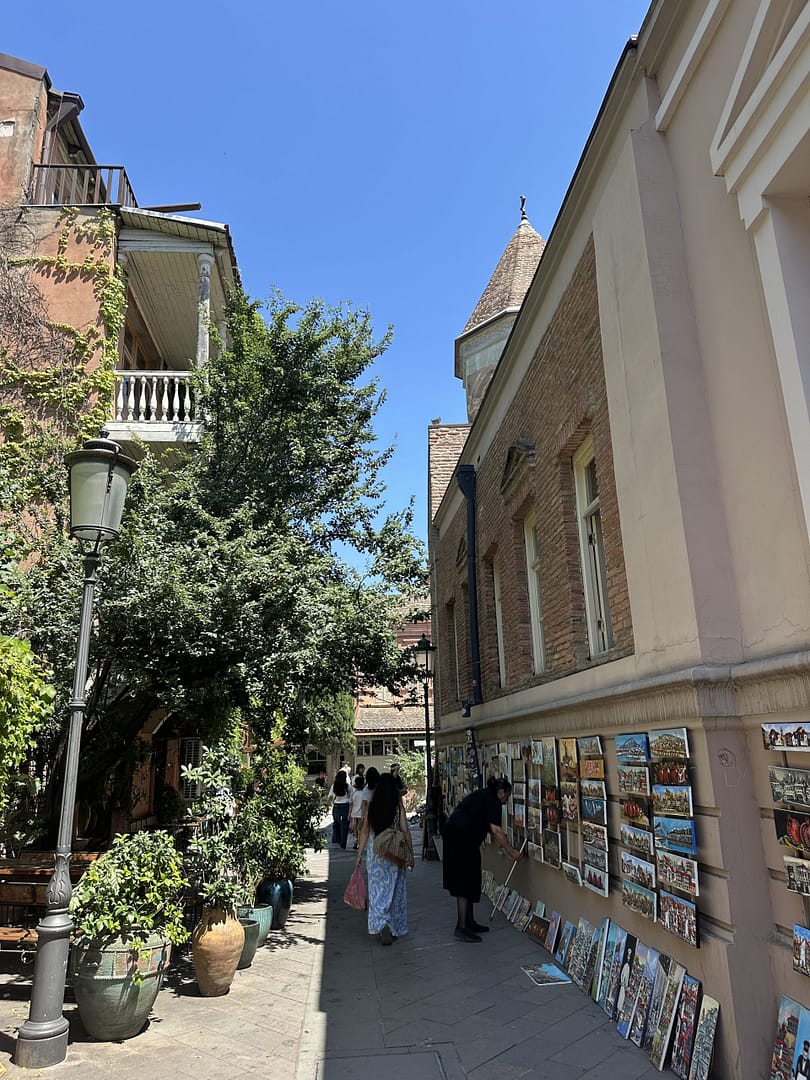
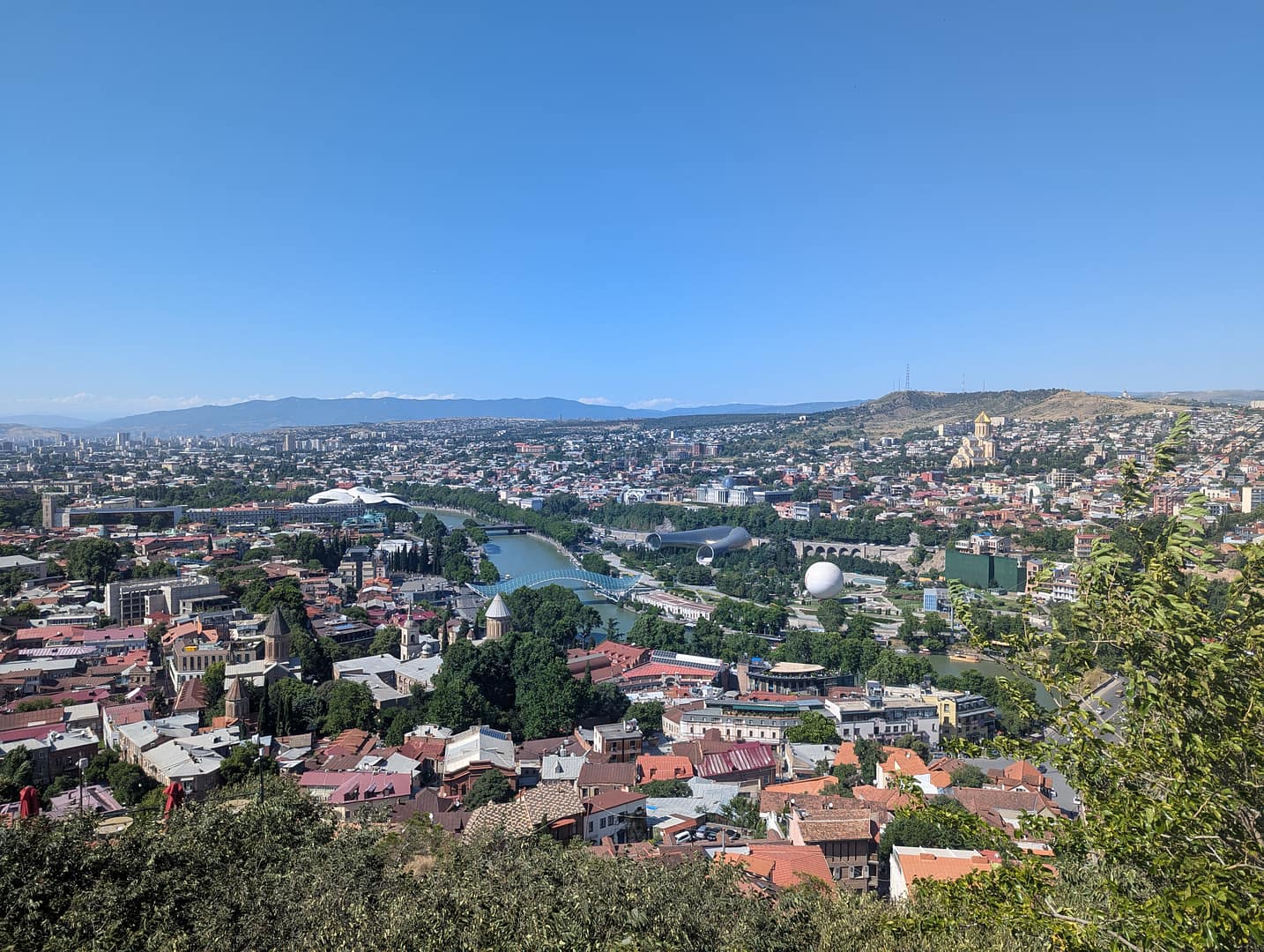
6. Experience Monumental Architecture – Chronicles of Georgia
This massive monument sits just outside Tbilisi overlooking the Tbilisi Sea. From a distance, this monument looks ancient, but up close you quickly realise it’s a modern creation (from the 1980s) blending religious and historical motifs in a bold, brutalist style.
The Chronicles of Georgia consists of massive stone pillars – some more than 30 metres high – decorated with detailed carvings. The upper sections depict scenes from Georgia’s long and proud history, including kings, warriors, and moments of independence, while the lower panels are dedicated to Biblical stories. Together, they symbolise the deep connection between Georgia’s national identity and the Orthodox faith.
It’s seriously impressive in person, and makes a good stop on the way to / from Mtskheta. At only around a 30-minute drive from Tbilisi, it’s easy to fit into a half-day trip. Despite its size and impact, the Chronicles of Georgia monument is still something of a hidden gem which many visitors to Tbilisi miss!

7. Marvel at Mtskheta – Georgia’s Ancient Capital
Once the capital of Georgia, Mtskheta is now a UNESCO-listed town just 30 minutes from Tbilisi. The highlight is Svetitskhoveli Cathedral, a beautiful 11th-century church, and one of the most important religious sites in the country.
Mtskheta isn’t just about the cathedral, though. We enjoyed wandering through the quaint streets, which are lined with souvenir shops, bakeries, and wine stalls. It’s a great place to pick up gifts like traditional textiles, carved wooden items, or a bottle of local wine.
The town itself also sits at the confluence of the Mtkvari and Aragvi rivers. There are viewpoints where you can take in the dramatic meeting of the two waterways. For even better panoramas, head up to Jvari Monastery, perched on a hill overlooking the town — it’s a short drive or hike and offers one of the most iconic views in Georgia.
Tip: Visit Mtskheta and Chronicles of Georgia together as part of a half-day trip.
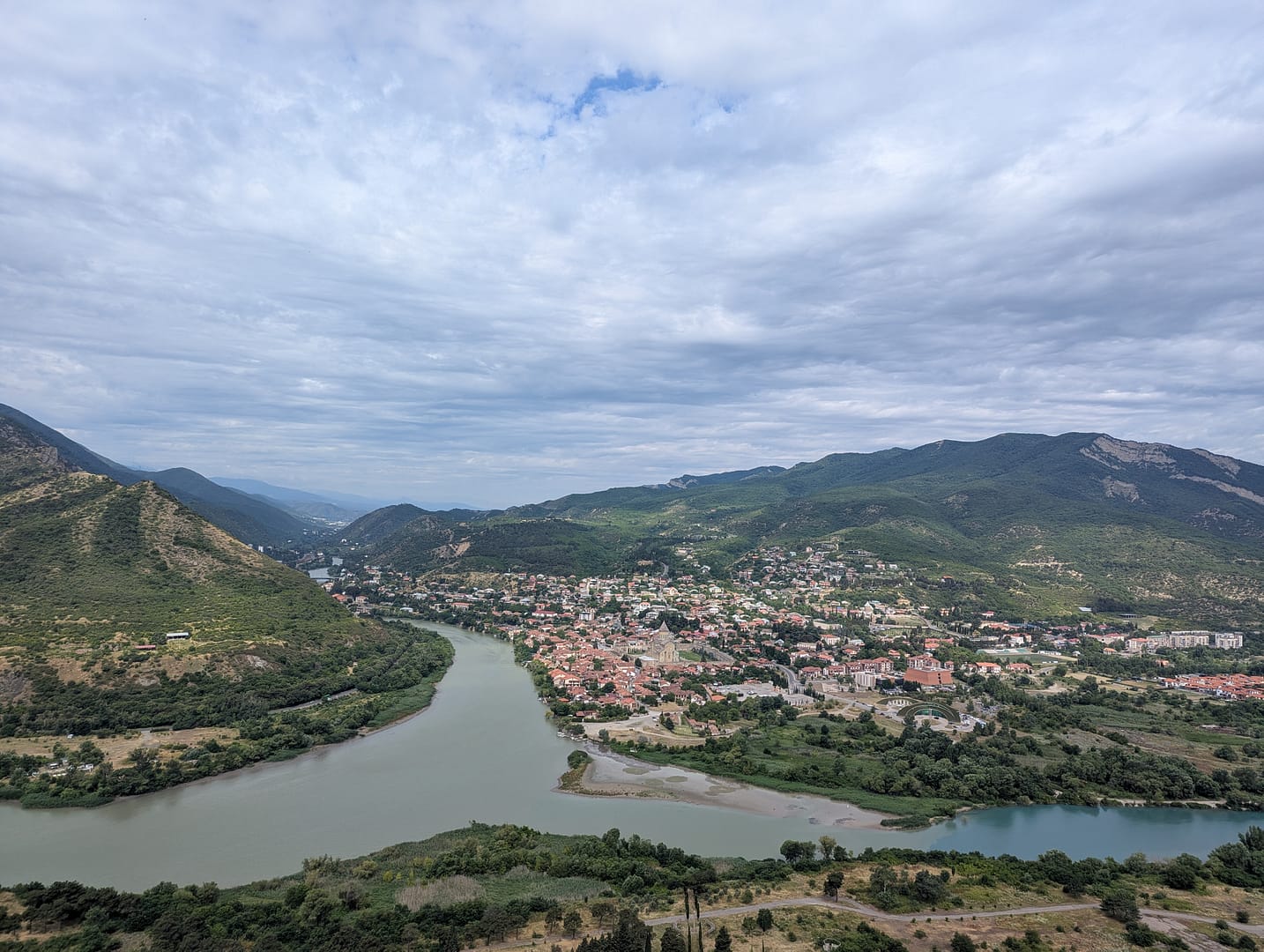
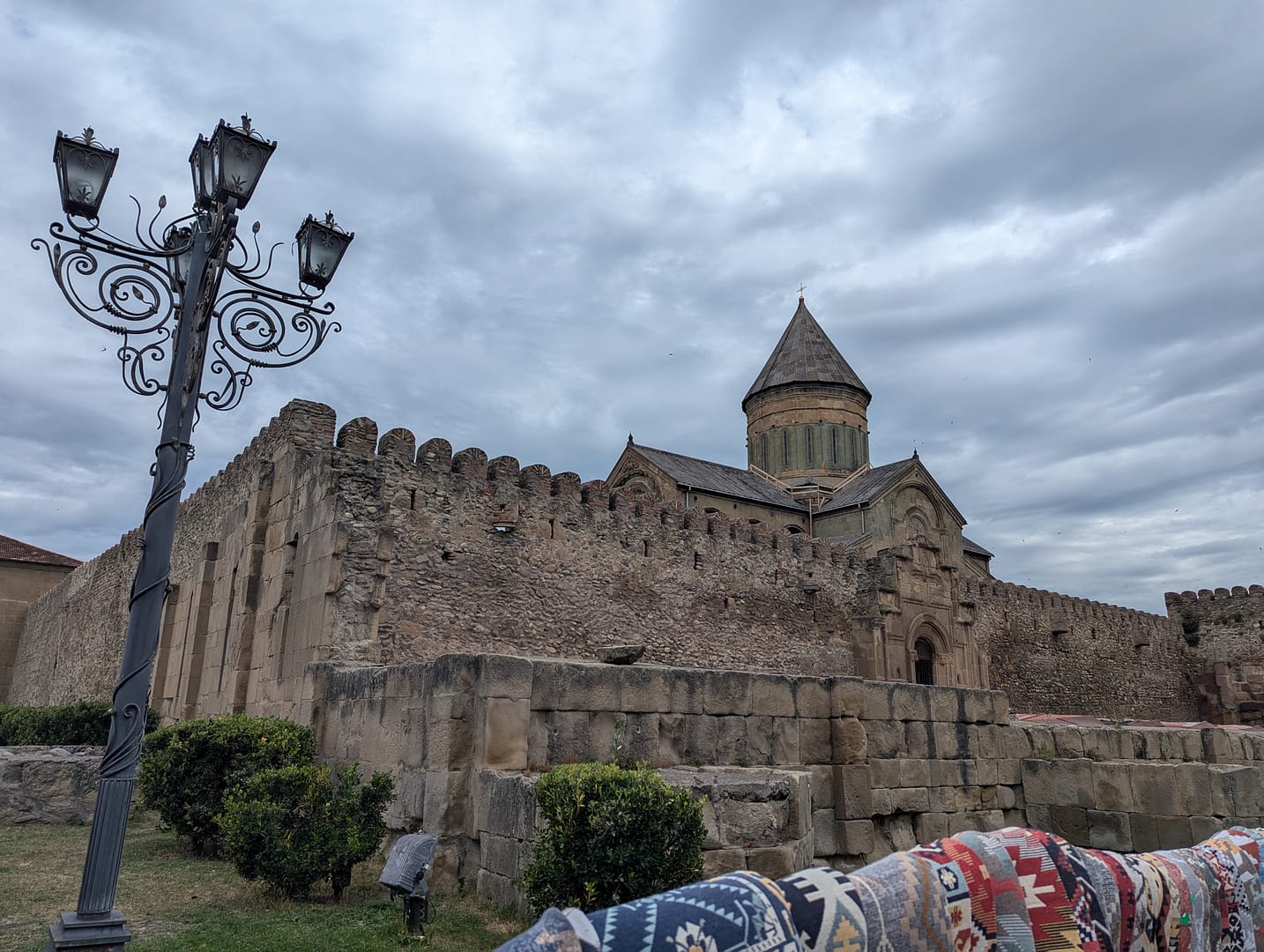
8. Visit One of the Oldest Cities in the World – Kutaisi
Located in western Georgia, Kutaisi is a smaller and calmer city than Tbilisi. It’s the kind of place where you can slow down and relax for a few days, with plenty of character. Kutaisi also offers easy access to the region’s natural wonders like Martvili Canyon, Okatse Canyon, and Prometheus Cave.
This city has a surprisingly rich history – it was once the capital of the ancient Kingdom of Colchis (from the Greek myth of Jason and the Argonauts). Today, reminders of its past sit alongside colourful markets, leafy parks, and wide boulevards lined with grand old buildings. One of the best things to do is wander through the Green Bazaar, the city’s bustling central market. It’s a feast for the senses, with piles of fresh produce, jars of honey, spices, and rows of churchkhela (the nutty Georgian snack that looks like a candle).
Kutaisi has also become more accessible thanks to new flight routes, which could make it an excellent starting point for your Georgian adventure. It’s not a huge city, but that’s part of its charm.
👉 Find Kutaisi accommodation here.
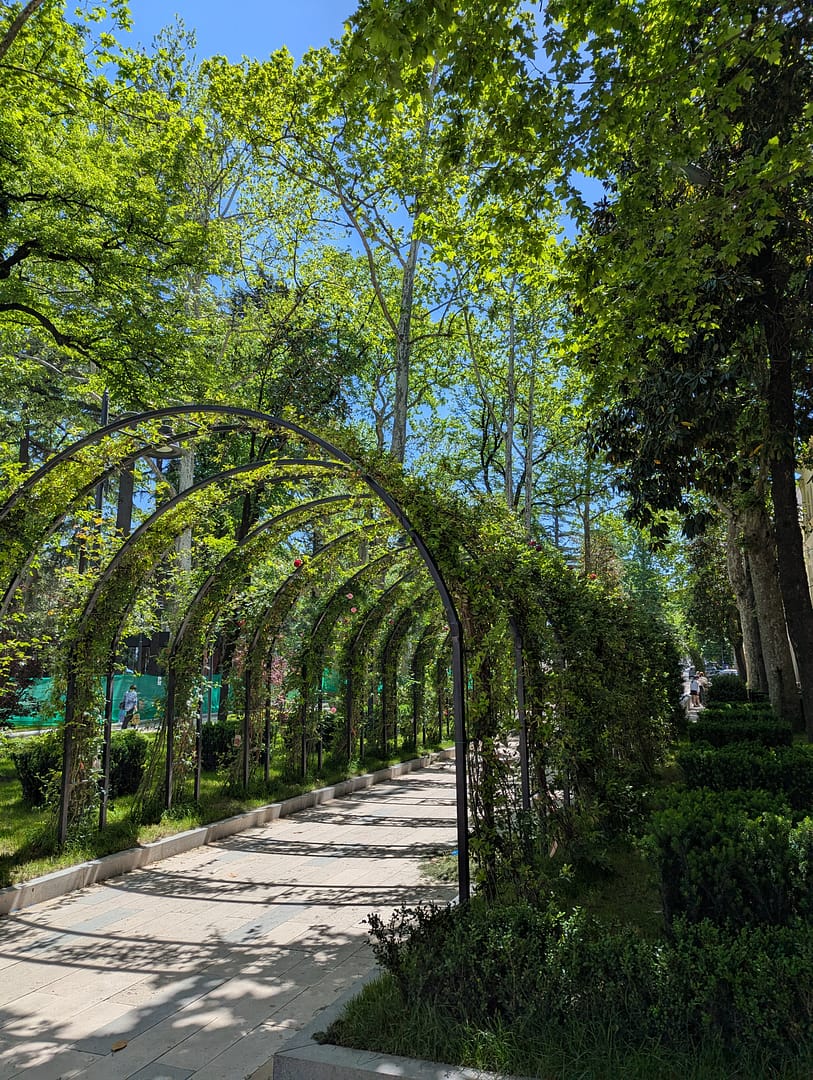
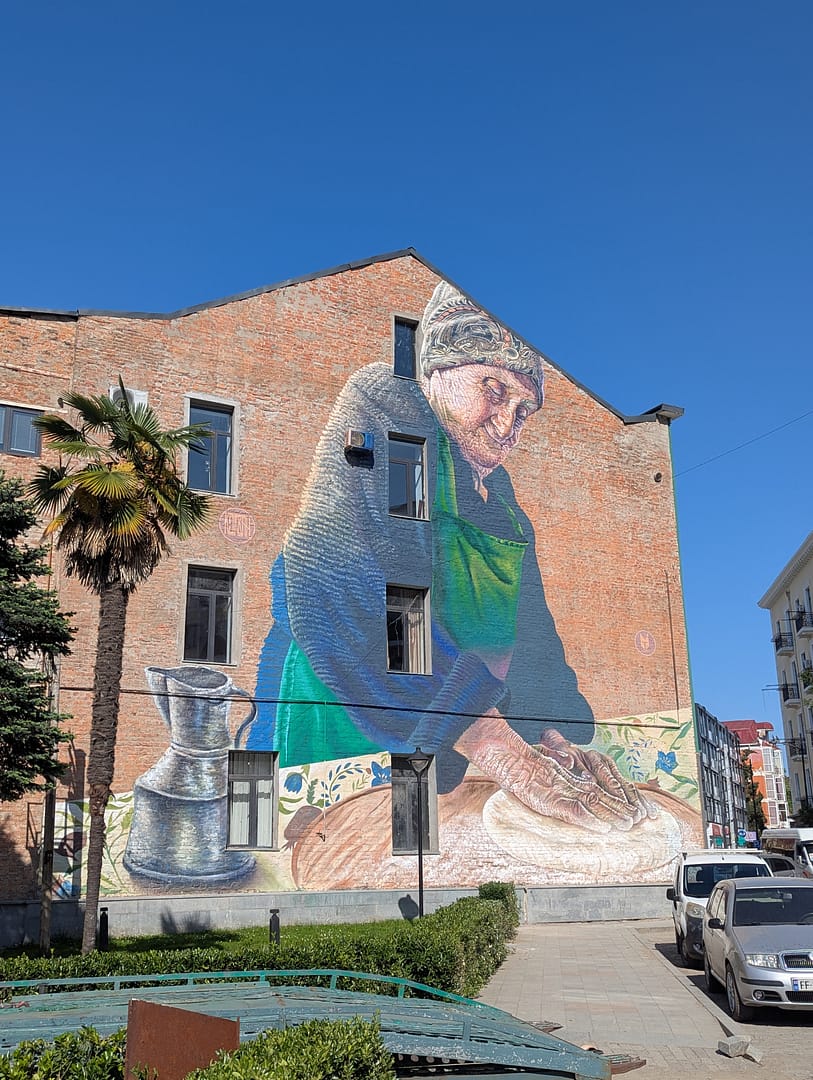
9. Try Traditional Georgian Food
One of our favourite things to do in Georgia was to eat – if you haven’t already tried Georgian food then you need to! From gooey khachapuri to juicy khinkali, the food in Georgia is hearty, flavourful, and addictive.
There are lots of types of khachapuri, but the most famous is Adjaruli khachapuri (a boat-shaped bread with molten cheese, butter, and an egg cracked on top). Khinkali are just as varied: traditionally filled with a lightly spiced meat, but we also found vegetarian versions. The garlic mushroom khinkali we tried were amazing!
Another type of food we fell in love with was cheburek — a deep-fried pastry/crispy dumpling filled with minced meat, onion and asian spices. It’s a common street food in the Caucasus region, so it is usually budget-friendly, and perfect for a quick lunch between sightseeing.
Tip: Most restaurants cook meals fresh to order, which means food takes longer but is worth the wait. Don’t expect fast food service — relax and enjoy the atmosphere.
👉 We’ve pinned all of our favourite food spots on our Georgia Map. For a small fee, you can unlock every place we loved.
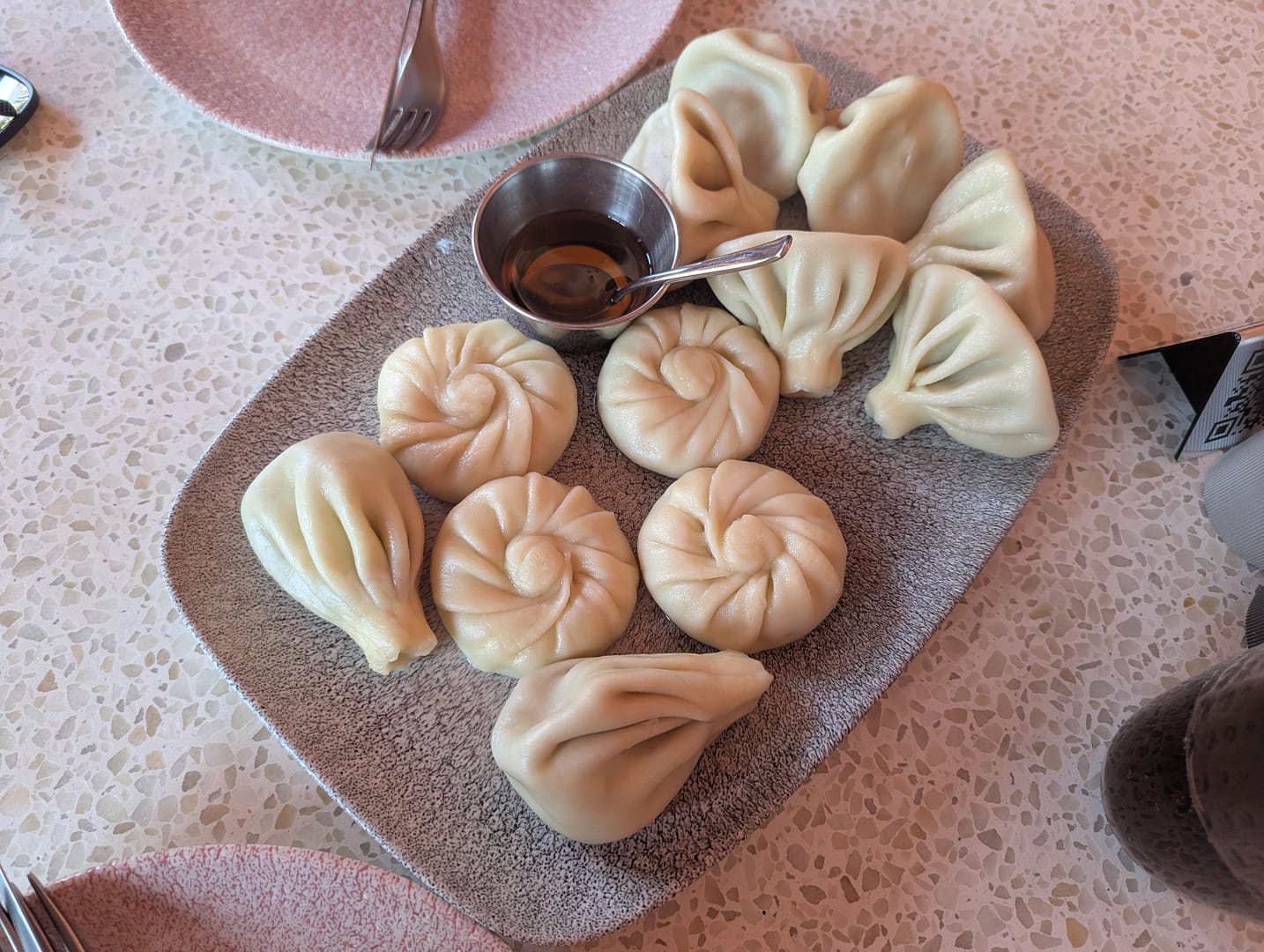
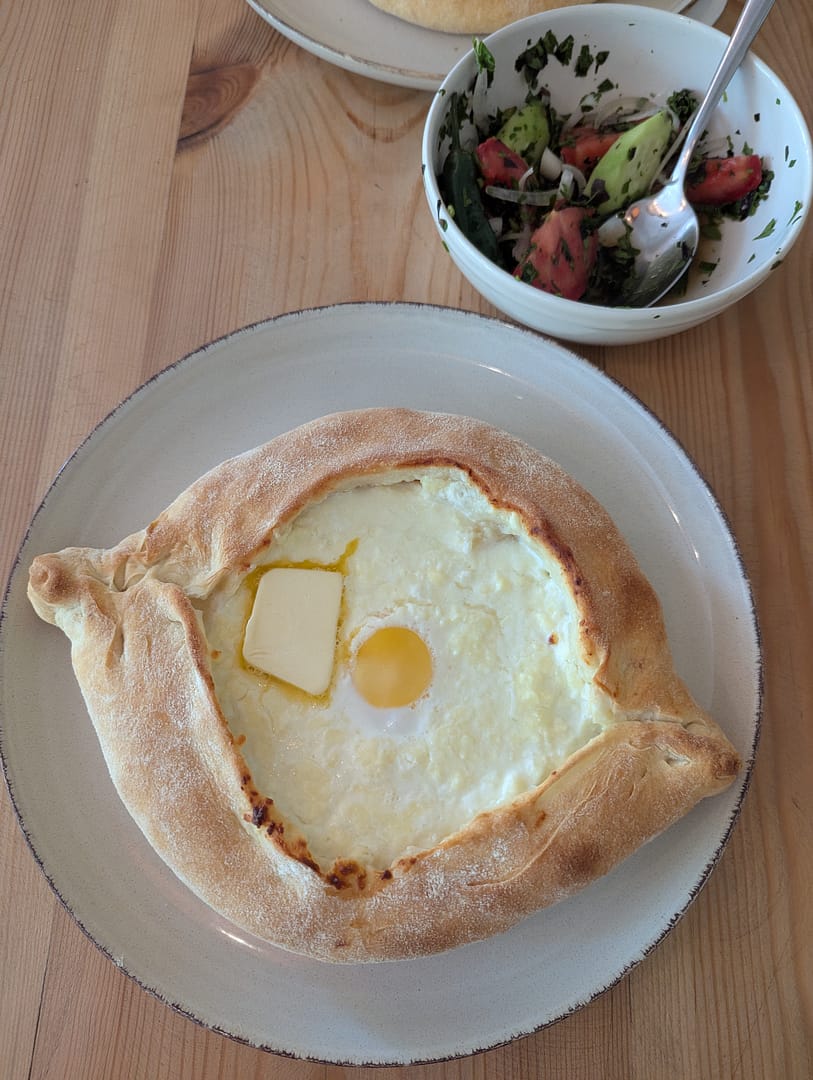
10. Enjoy Sea Views from the Botanical Gardens – Batumi
Before visiting, we’d heard mixed reviews of Batumi – the 2nd largest city in Georgia. And yes, it’s more resort-like than the rest of the country — but the Botanical Gardens in Batumi really surprised us.
Wandering through lush trails with viewpoints that look like something out of Thailand, we found it to be a peaceful escape from the city’s hustle. A trip to the Botanical Gardens is definitely one of the best things to do in Batumi, Georgia.
However, Batumi itself has its own charm, with a seaside promenade, quirky Soviet-era architecture, and a vibrant nightlife. If you’re in the area it’s worth a day or two here to check it out for yourself.

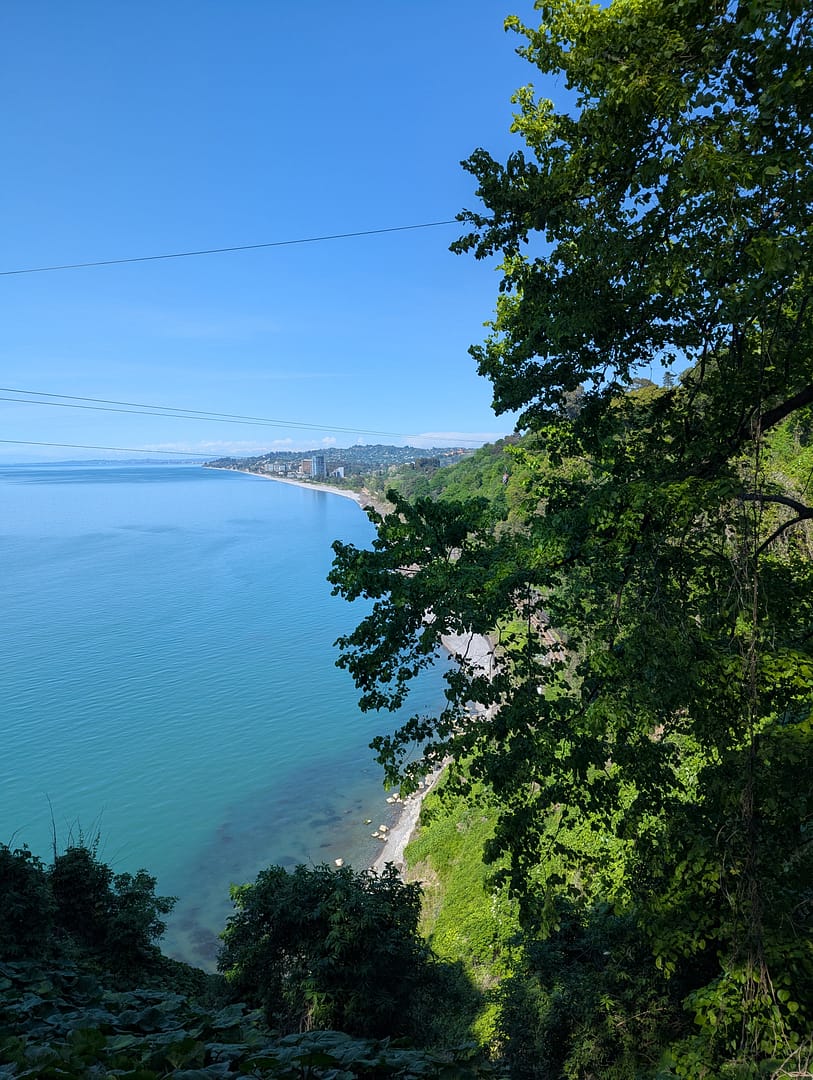
Is Georgia Worth Visiting?
Georgia is a beautiful country that offers so much more than you expect — from wine and mountains to history and modern culture. These 10 highlights are just the beginning, and we’d go back in a heartbeat. In our opinion, yes we think Georgia has something to offer for everyone.
If you’re planning a trip to Georgia, check out our Kazbegi and Kutaisi guides for more detail. Or unlock our Georgia Map to find all our favourite restaurants and hidden gems. We’ve also shared our journey in video form over on YouTube.
For more information about what it’s like to visit Georgia, check out the Georgia tourism website here.

